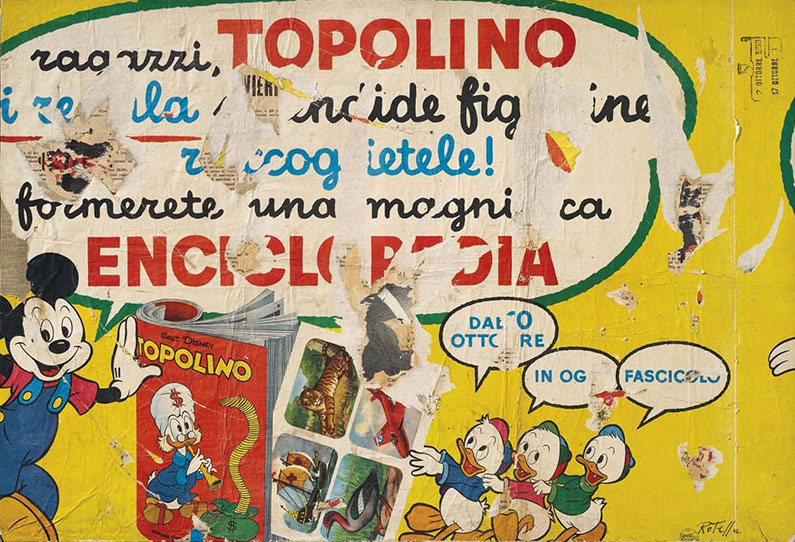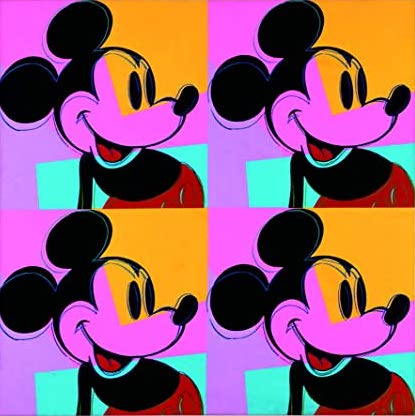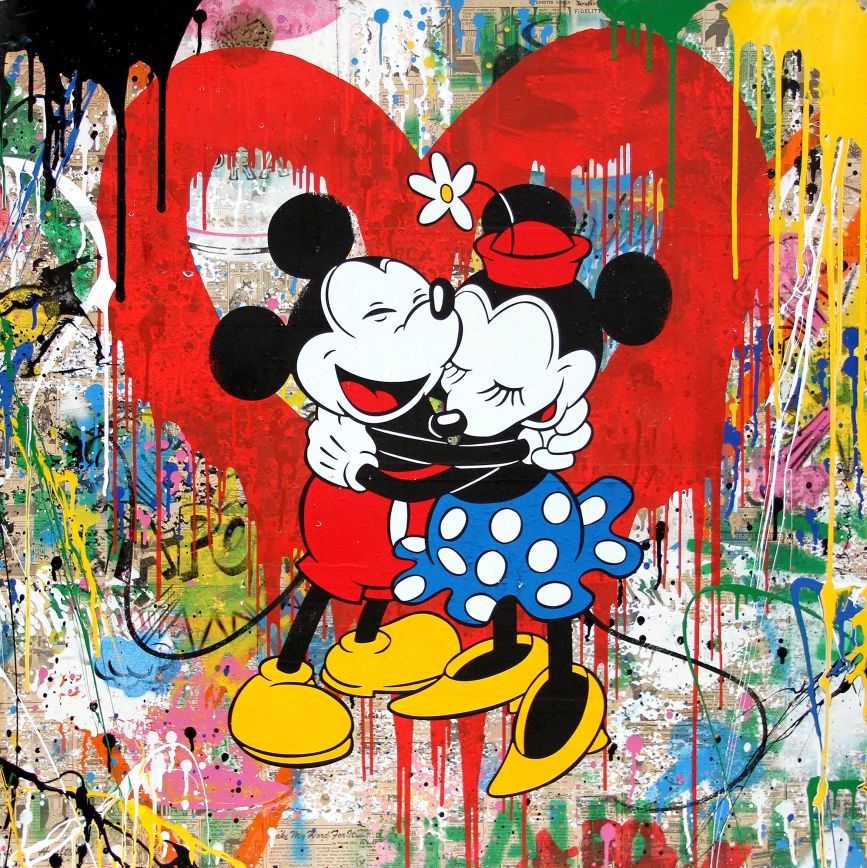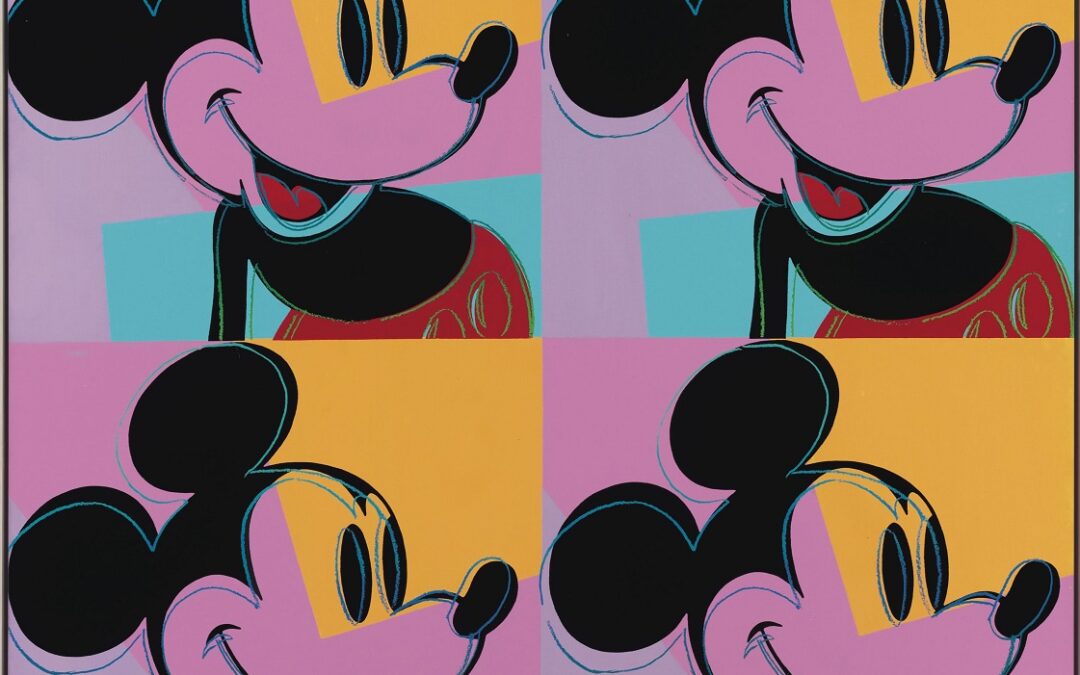
It was 1928 when the Mickey Mouse character first came to life and became the protagonist of the first short film entitled Plane Crazy. Almost a century later, the character created by Walt Disney still manages to amaze thanks to his numerous transformations!
Immediately defined as a symbol of hope, Mickey Mouse managed to offer comfort and comic relief at a time when America was facing the historical period known as the Great Depression.
Discover Artworks Starring Mickey Mouse
From the great masters of contemporary art to street art artists, there are many who have challenged their creativity in creating their own version of Mickey Mouse, making the image known to the mass public unique and a true work of art. Discover the artworks by these artists who incorporated their unique styles of Street Art and Pop Art, with Mickey Mouse.
- Mimmo Rotella (1959)
- Roy Lichtenstein (1961)
- Andy Warhol (1986)
- Banksy (2004)
- Damien Hirst (2012)
- Mr. Brainwash (2018)
- Giuliano Grittini (2021)
Mimmo Rotella: Mickey Mouse (1959)
It was 1959 when Mimmo Rotella created his version of Mickey Mouse. Realized in his iconic style, the work is a decollage of an Italian advertisement announcing the release of Mickey Mouse figurines on newsstands.
Thanks to his innovative techniques, including the iconic rips, Rotella is defined as one of the most influential artists of the second half of the 20th century.
Roy Lichtenstein: Look Mickey (1961)
Just two years after Mimmo Rotella's work, it was Roy Lichtenstein who created his version of the character from Walt Disney, Mickey Mouse. Entitled Look Mickey, this work represents a turning point in Lichtenstein's artistic production, being the artist's first non-expressionist work and, at the same time, the first work in which the technique of Ben-Day, speech balloons and comic images is used.
Through the use of these new techniques, Liechtenstein creates an industrial mezzotint effect, i.e. that method of printmaking typically in light and dark; however, the artist decides to use colours by altering the colouring of the original source and reducing it to the use of primary colours only, giving it a 'pop' look.
The artwork Look Mickey takes an image from a comic strip entitled Donald Duck Lost and Found, illustrated by Bob Grant and Bob Totten, in which Mickey is seen laughing at his friend Donald Duck, who has 'caught' himself and says "Look Mickey, I hooked a big fish!".
The work bridges the gap between the abstract expressionism that characterised the artist's work up to that time and the typical Pop Art works that would mark a turning point in Lichtenstein's career. The artist's works will be characterised by his ironic humour as well as their aesthetic value.
"One day it occurred to me to do something that looked like a comic book illustration without using the symbols of art at the time: the thick and thin paint, the calligraphic line and everything that had become the hallmark of painting in the 1940s and 1950s. I was making signs that resembled a real comic strip'. - Roy Lichtenstein
Andy Warhol: Quadrant Mickey Mouse (1986)
Another artist who paid homage to the Mickey Mouse character by making him unique and different from others was the master of Pop Art, Andy Warhol. Mickey Mouse artworks had already been created, one of the most important being the 1981 one that paid homage to the Disney character in the Myths series. Mickey Mouse was immortalised with his big smile and classic look within a contemporary style.
In 1986, Warhol decided to create another work dedicated to Mickey, entitled Quadrant Mickey Mouse. The work repeats the composition used by Warhol in 1962 in the work dedicated to Marilyn Monroe, only in this case it is Walt Disney's Mickey Mouse who is the protagonist of the work.
In Warhol's work, Mickey is printed four times and is coloured in bright, luminous colours such as light purple, yellow and blue. The artist repeatedly stated that he himself wanted to become as much a cultural icon as the Disney character, wanting to recreate the success and commercial art empire that Walt Disney had managed to create. Warhol's Factory itself, the artist's studio where young artists and actors gathered to create works and films, is reminiscent of an animation studio.
Warhol uses the image of Mickey Mouse by associating it with carefreeness, playfulness and childlike innocence, characteristics that have also become peculiar to Mickey's image through the influence of the media. Another aspect that Warhol wants to emphasise is the timelessness that characterises Mickey Mouse; the character's fresh appearance and unchanged age make Mickey Mouse immortal and one of the favourite characters in American history.
Banksy: Napalm Girl (2004)
It was in 2004 that the street-artist Banksy created his version of Mickey Mouse, a far cry from the image his predecessors had given him. The artwork depicts the iconic character Napalm Girl is the shot taken by the photographer Nick Út, of Kim Phùc, when she was still a child trying to escape the napal bombing during the Vietnam War.
The photo has become a symbol of the conflict, hence Banksy's decision to take this image and turn it into a real denunciation of American society through the inclusion of two icons of society, namely Mickey Mouse and Ronald McDonald.
In spite of the narrative's significant departure from the carefree image of Mickey Mouse, his role within the work remains that of a character recognised globally as a symbol of happiness and confidence. Like many of the street artist's works, however, the presence of these two characters within such a harrowing scene can have an ambivalent meaning: are Mickey Mouse and Ronald McDonald helping the little girl escape from the bombs or are they accompanying her towards the end?
Damien Hirst: Mickey 2012
A quirky image that perfectly combines the image of the historical and iconic character with the unique style of the artist was given to us by Damien Hirst in 2012 with the artwork Mickey.
The work pays homage to this universal icon at the request of Disney. Hirst, however, depicts Mickey Mouse in his very personal style; the artist is in fact known for his Spot Paintings so much so that he decided to turn Mickey into one of them. The peculiarity of the work is that it is easily recognisable despite the few strokes used.
"The thing about Mickey is that although he has gone through so many changes in form and association, he is timeless. In a way it has the same meaning in the 21st century as it did decades ago. I watched cartoons as a child and my children watch them too. It is relevant because it has remained so culturally embedded and still looks fantastic. The way children are entertained today has obviously changed dramatically, but children are still children and they love the same things. I like that the image is so powerful that it only takes twelve different coloured dots to create something so instantly recognisable." - Damien Hirst
Mr. Brainwash: Mickey & Minnie (2018)
In 2018, it is French street artist Mr. Brainwash’s turn to create Mickey & Minnie a work in which the almost 100-year-old character is painted with his unmistakable sweetheart, Minnie.
The two protagonists are wrapped in an enormous red heart and condense the artist's poetics aimed at instilling his undying passion for colours, for life and for his fellow man; the character of Mickey Mouse himself embodies the street-artist's iconic motto "Life is Beautiful".
Through the figure of Mickey and Minnie Mouse, Mr. Brainwash draws on typical and familiar motifs that characterise the Pop Art movement, reinterpreting them and making them contemporary within his works.
Giuliano Grittini: Mickey Dollars (2019)
Among the most recent representations featuring Mickey Mouse as the protagonist of an artwork is Giuliano Grittini's 2019 work entitled Mickey Dollars.
In the Italian artist's unique work, a close-up of Mickey Mouse is depicted while holding a €500 banknote. The classic and timeless depiction of the character contrasts with the blue background and rich dollar symbols, whose style and colours recall Andy Warhol's work in which the currency was the star of the canvas.
Using the "cracker art" technique, Grittini re-proposes images already known to the public and through cut-outs, collages and luminous and glittering inserts shows the viewer his own vision of Mickey Mouse.








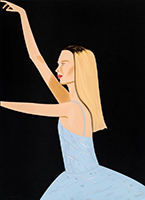
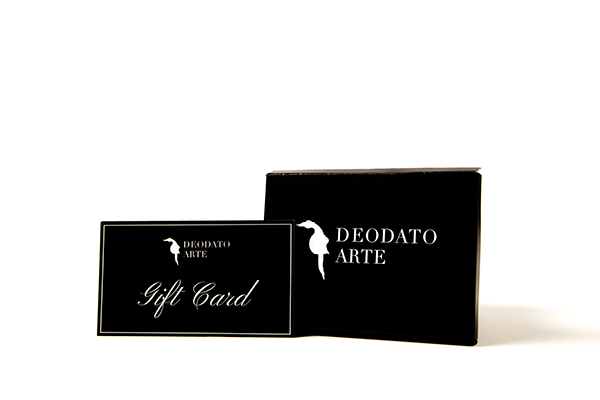
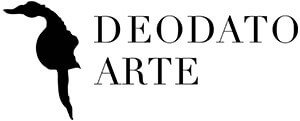
 Register
Register Wishlist
Wishlist Contact Us
Contact Us

